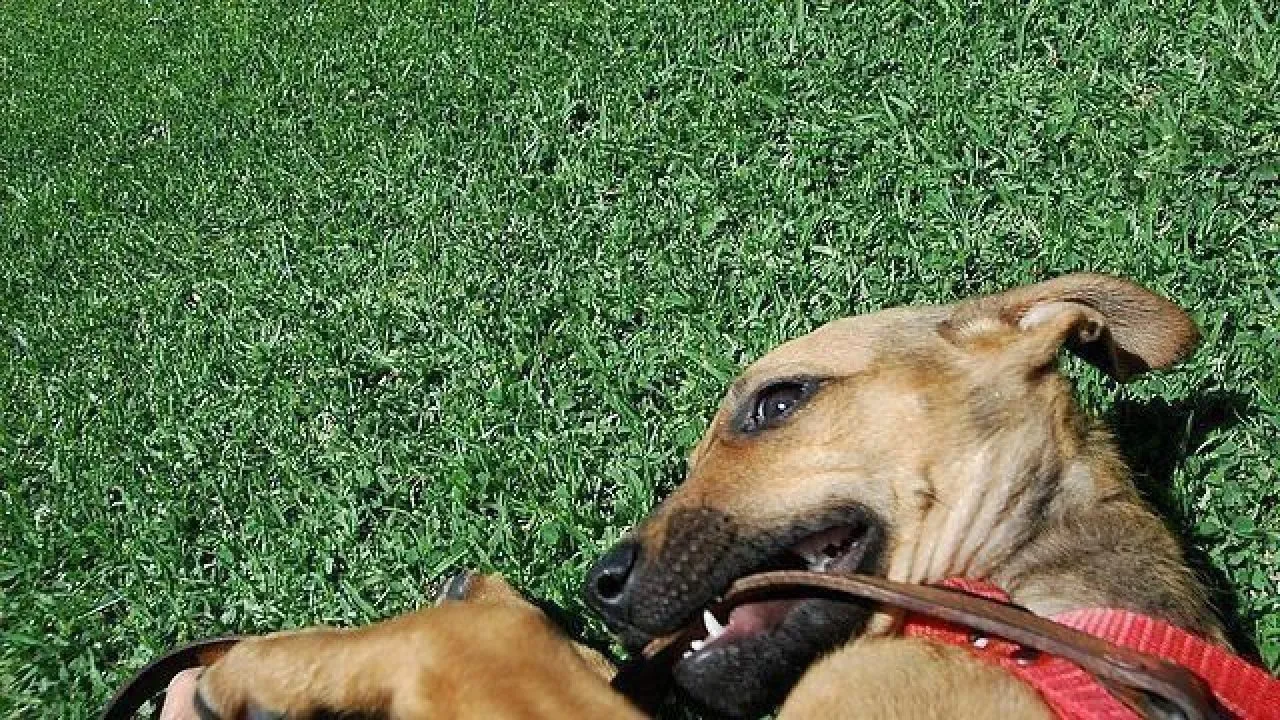Key Takeaways
- Long line leashes are good for outdoor activities and energetic puppies.
- Retractable leashes are fine for well-behaved dogs but can cause injuries.
- Leather leashes are simple, sturdy, and stylish.
- Hands-free leashes can be used to take your dog running, hiking, or cycling.
- Other leash types are the double leash, rope leash, and chain leash.
Walking your dog is one of the greatest joys of pet parenting. The health benefits of pets are well established, among them an increase in physical activity. Your dog also benefits from daily exercise, whether it’s a gentle trot around the block or your daily 5-mile run. It’s important to find the correct dog leash for your activities as well as your pet’s size and temperament. Rottweilers need a different leash than Chihuahuas, senior dogs versus puppies, and so on. Learn more about the different types of dog leashes and find the best fit for your pup.
1. Long line dog leash
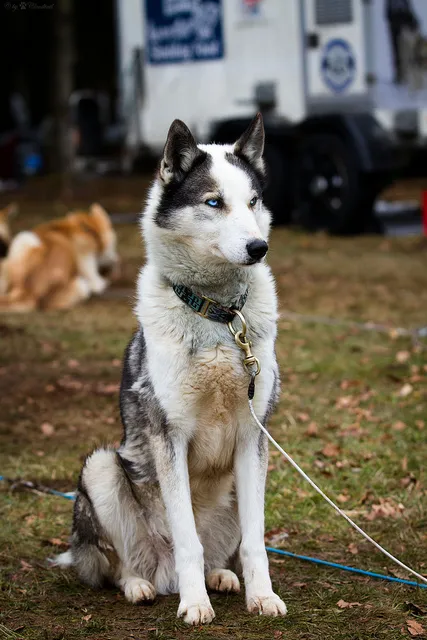
This type of dog leash is perfect for the outdoors. Loop the long line around a sturdy tree or post to deter escape artists but still spend time outside with your dog. A long line is also perfect for puppies with a ton of energy and curiosity; even in a completely fenced yard there’s plenty of trouble for a puppy to get into.
Whether you’re camping or in an unfenced backyard, remember to always provide your pet with plenty of shade and water to prevent heat stroke. Check the surrounding area for any dangers like ledges, cliffs, holes and other tangling hazards. Never attach your dog to a long line leash anywhere he could jump off and risk choking or strangulation. Always supervise your pet, especially destructive chewers who have been known to break through this type of dog leash.
Best dog leash for: Outdoors activities, energetic puppies
2. Retractable dog leash
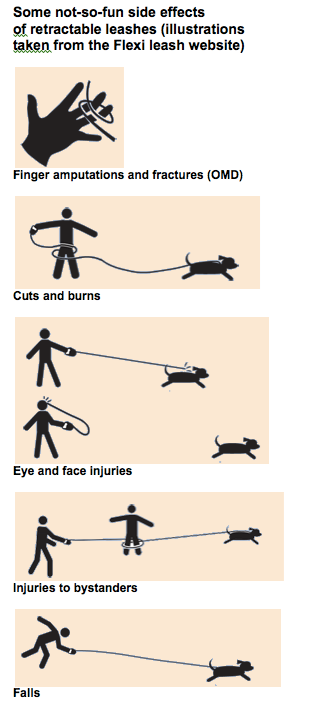
One of the most popular types of dog leashes among pet parents, most dog trainers and experts do not approve of the retractable dog leash. “By their very nature, retractables train dogs to pull while on leash, because they learn that pulling extends the lead,” says veterinarian Dr. Karen Becker. ” So by using this kind of leash, you’re actually reinforcing your dog’s bad behavior! The leash’s spring-loaded design is also prone to malfunctions, with a bulky handle that can easily be dropped or yanked out of a hand.
The length of most retractable dog leashes – some over 25 feet, compared to a standard 6-foot dog leash – can cause entanglement of both pets and humans, even leading to injury. In 2007 the Consumer Product Safety Commission recorded 16,564 injuries requiring hospitalization associated with dog leashes. Approximately 23.5 percent of those injuries involved fingers, which are commonly caught in the retractable leash’s thin cord. In 2005, Boston pet parent Heather Todd was walking her 90-pound Labrador on a retractable dog leash when Penny bolted, dragging Heather. Unbeknownst to her, the leash had looped around her index finger, amputating it; doctors were unable to reattach Heather’s finger. Minor scrapes, cuts and “burns” can happen to dogs as well, who may also injure their neck or windpipe if they keep running but the leash ends.
Best dog leash for: Well-behaved pets who won’t run off
3. Leather dog leash
The ultimate in simplicity, a leather dog leash is perfect for stylish pets who are already leash-trained. Select a leash four to six feet long, depending on the size and strength of your dog, to avoid entanglements. Although leather is a fairly sturdy material, hardcore chewers can easily rip through it, possibly leading to an intestinal obstruction. Give a matching leather collar or even a custom-made leather leash to your favorite pet parent as the perfect give.
Best dog leash for: Stylish, obedient pups
4. Hands-free dog leash
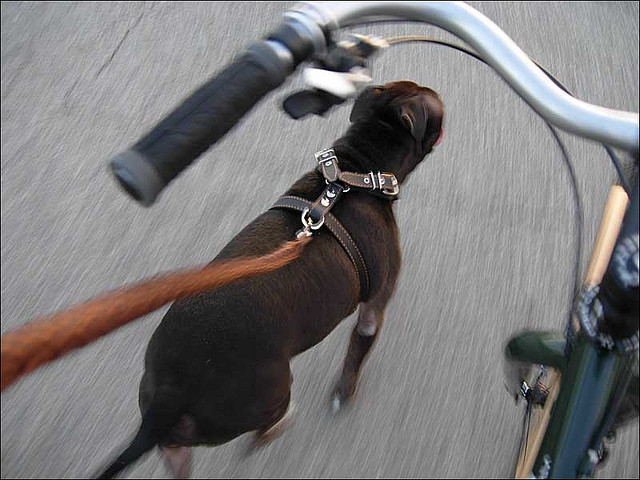
The best choice for active pet parents, get a hands-free dog leash if you taking your pup bicycling, hiking or running with you. Those made for bicyclists typically attach to a bike under the seat, sturdy enough to prevent you from falling if your dog goes running. Other hands free dog leashes are designed like a belt that clips around your waist, with a lead that attaches to the dog.
The downside to using a hands-free dog leash is loss of control – if your dog starts pulling, he may be able to pull you with him! Only use this type of leash with pets who are well-trained and experienced runners to avoid potentially injuring yourself or your dog.
Best dog leash for: Joggers, bicyclists and other active pet parents with calm dogs
5. Double dog leash
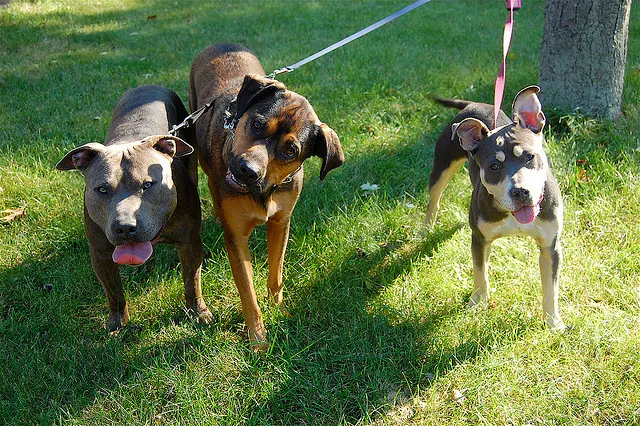
It’s just what it sounds like, a dog leash for two pups! Famously employed by dog walkers, a double dog leash gives you a free hand and makes managing a duo easier than ever. Be warned that double the dogs also means double their pulling power; many a pet parent has been dragged or yanked down by strong pups, even causing serious injury.
Again, loss of control can be an issue if one dog is more adventurous than the other, pulling the pups in opposite directions. Some dogs may initially struggle on a double dog leash, super confused about the whole situation, while other will instantly take to it. Do some test runs – or walks – in a fenced yard first to see your dogs’ leash dynamic before hitting the streets.
Best dog leash for: Dog walkers, pet parents with two (manageable) pups
6. Rope dog leash
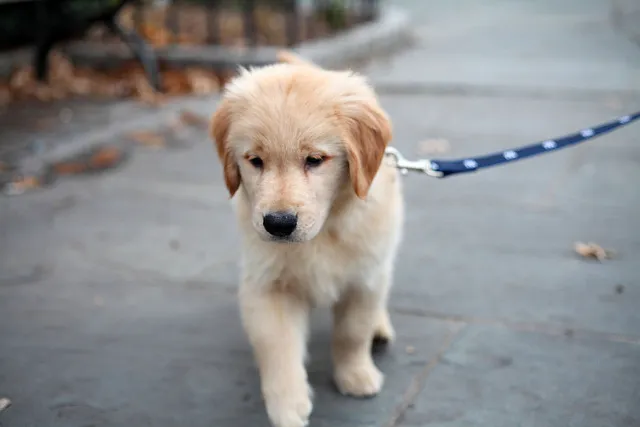
Although what may first come to mind is rope – nautical, rough rope made from natural fibers – most rope dog leashes use nylon climbing rope. For the eco-friendly pet parents, buy a recycled rope dog leash; those who walk their dogs at dawn, dusk, or in the dark should select one that’s also reflective. Many have outdoorsy touches, like a carabiner instead of a traditional clip, and there are a wide variety of colors and patterns. All of this makes a climbing rope dog leash high-quality and long-lasting. After all, if those ropes can hold humans, they can easily walk your dog.
If your dog is a destructive chewer, keep this leash out of paws’ reach. While nylon chew toys are on the market, the material can actually be very dangerous to dogs if ingested, potentially creating an intestinal blockage. Consider spraying an all-natural deterrent on the leash, like vinegar, citrus or hot peppers.
Best dog leash for: Environmentally-conscious pet parents, high-frequency walkers
7. Chain dog leash
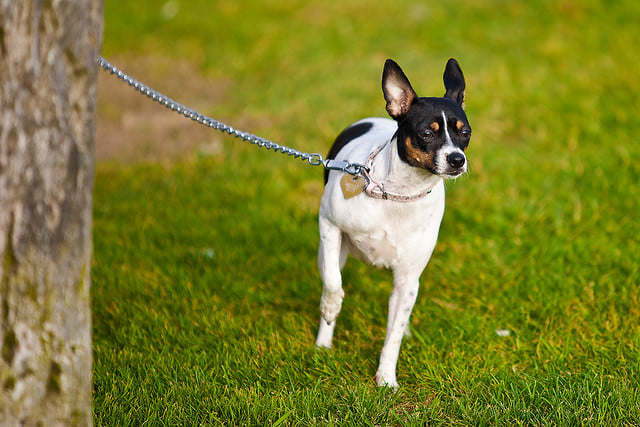
Just to be clear, when we say “chain” dog leash, we’re referring to one made of metal links, not any sort of choke, prong or pinch collar – these types of collars and leashes can severely injure dogs. However, a chain dog leash is perfectly safe when used with a standard dog collar on a well-trained pet. The metal links are resistant to chewing, and the leash is heavy enough to slow down some dogs. It’s also very hard to snap or break a metal dog leash, so this is a great option for large, strong dogs.
As we mentioned, a chain dog leash can be a little on the heavy side – not great for small dogs or young walkers. Depending on the width of the metal chain, fingers can rarely become tangled in the leash. With any dog leash, keep your fingers securely gripping the handle and away from the length of the leash.
Best dog leash for: Big dogs, leash-pullers and -chewers.
(Featured image via Flickr.com/wonderlane)
